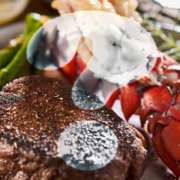Iron from Meat and Type 2 Diabetes
The abstract begins simply enough: “Dietary Haem iron intake is linked to an increased risk of Type 2 Diabetes.” Haem iron is another word for heme iron, iron sourced from animal meat. But let’s get back to the statement. The first question that pops into my mind is this: how did they measure iron intake from all sources, especially when you consider the scope of the study?
The research team examined data from over 200,000 potential subjects from three large studies of healthcare professionals; some of the subjects were followed for as long as 36 years. Researchers wanted to examine associations between iron intake from all sources and the risk of type 2 diabetes. They also examined blood markers in a subset of close to 38,000 subjects: insulin, lipids, inflammation, and uric acid levels.
They found that heme iron intake resulted in a Hazard Ratio of 26% increased risk for the development of type 2 diabetes when comparing the highest quintile with the lowest quintile of heme iron intake. The heme iron intake was also correlated with poor blood profiles such as high insulin, hs-C-reactive protein, and lipid levels. Nothing from non-heme sources.
Is it time to reduce meat intake? That’s not my initial question. My question is how’d they do that? How did they measure the heme and non-heme iron levels in over 200,000 people? We’ll hold on that for now and look at a study with almost 2 million subjects on Saturday.
What are you prepared to do today?
Dr. Chet
Reference: https://www.nature.com/articles/s42255-024-01109-5









